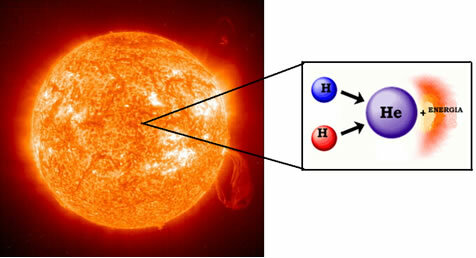Incandescent light bulbs are present in most Brazilian homes. They are formed by a glass tube that has a tungsten filament through which the electric current passes, heating the atoms that compose it and generating a yellow luminosity.
But this large use of these lamps must change, because, as of June 30, 2014, the manufacture and import of lamps incandescent 60 W will be closed in Brazil.
This is in accordance with the Ordinance No. 1,007 of December 31, 2012, established jointly between the Ministry of Mines and Energy, Ministry of Science, Technology and Innovation, and Ministry of Development, Industry and Foreign Trade. As specified by this ordinance, incandescent lamps from 61 to 200 W were already prohibited, but those with between 61 and 150 W could be sold until December 31, 2013.
Now 60W incandescent lamps are also banned, but those in stock may be sold until December 30, 2014. The owners of supermarkets and other wholesalers and retailers will be able to sell them for another year.
It is also established that incandescent lamps of 25 and 40 W will no longer be produced until 2015. By 2016, incandescent lamps with power less than 25 W will be replaced, which will result in the elimination of all lamps of this type.
Brazilians will have three purchase options: halogens with bulb, compact fluorescent and LED.
The news of the end of incandescent light bulbs was not welcomed by many and there are different opinions on the subject. Many did not like the measure because the purchase price of these three options is much higher than that of the light bulb incandescent. In addition, many architects and designers will need to turn around as the beautiful yellowish color of the incandescent lamps, which creates a more intimate and comfortable environment, is not reproduced identically by the others. In addition, this yellowish light is important for the production of melatonin, a hormone that regulates the individual's biological cycle, making them relax, reminding them of the color of candles.
Others point to one more factor: fluorescent lamps contain mercury, therefore, if they do not receive the correct destination, they can end up polluting the environment with this heavy metal.
However, this measure was taken mainly due to the demand for energy efficiency, so that there is less electricity used, especially now that, due to the scarcity of rain, the reservoirs of the hydroelectric plants were at very low levels.
Although they are more expensive, the long-term cost/benefit of using fluorescent lamps is worth it, as, as illustrated below, theyare much more economical than incandescent bulbs.
Do not stop now... There's more after the advertising ;)

Halogen, fluorescent and LED lamp compared to incandescent lamp energy consumption
By way of comparison, if all homes in Brazil would replace their 61 to 100 W incandescent light bulbs with light bulbs compact fluorescent, this would result in savings of 2.2 billion kWh per year, which would sustain the entire city of Recife for two years.
That savings also go to the consumer's pocket, because, if 10 incandescent bulbs of 60 W in a house were replaced by LED bulbs, this would result in savings of 200 reais per year.
Furthermore, the durability of fluorescent lamps is longer. While incandescents last about 750 hours, fluorescents have an average life of 6000 hours.

Fluorescent lamps save more energy and money than incandescent lamps
There are, however, those who argue that this durability is relative, as they are only considered really economical when they have a long useful life, what happens in places where they are lit for a long time. On the other hand, in places where they are turned on and off at short intervals, this durability decreases and the cost/benefit ratio is compromised.
Speaking now of the environment, another weakness of incandescents is that, in addition to requiring more electricity, they exacerbate the problem of global warming, releasing more carbon dioxide into the atmosphere and generating a lot of heat. About 95% of the energy consumed by them is transformed into heat, only 5% is converted into light. This leads to greater use of fans and air conditioners.
As for the mercury vapor that exists in fluorescent lamps, an important aspect is to make the population aware of the correct destination after its use, that is, store them properly, preferably in the original cardboard boxes, do not break them and take them to collection points that will carry out their recycling. See how this is done in the text Recycling of fluorescent lamps.
Designer fluorescent and LED lamps are more modern. As for the color, the ones that come closer to the yellowish tone are the halogens and the LED ones.
Is that you? What did you think of this decision? Find out from a variety of reliable sources to form your opinion and help you take your side on this issue.
By Jennifer Fogaça
Graduated in Chemistry

